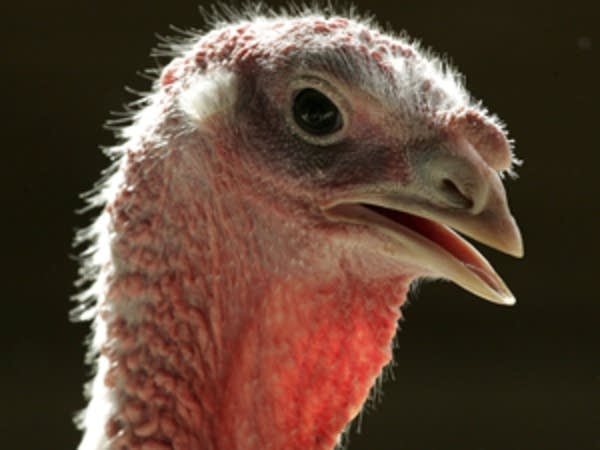With thousands of turkeys lost, Minnesota authorities seek source of bird flu

Nearly 150,000 turkeys have either died from avian flu or been killed as a precaution as the number of Minnesota farms infected with the deadly virus expands.
Three farms have now been hit, but how the virus infected them remains a mystery. Health officials say the exact path may never be found.
The first case turned up in late February in Pope County. After that initial outbreak, all was quiet for nearly a month. Then, late last week, state officials announced turkey flocks in Lac qui Parle and Stearns counties were infected.
The random spread of the disease has individual turkey producers wondering if they could be the next to absorb the financial losses of a flu outbreak in their flocks. Steve Olson, executive director of the Minnesota Turkey Growers Association, said one farmer told him he was on "pins and needles."
Create a More Connected Minnesota
MPR News is your trusted resource for the news you need. With your support, MPR News brings accessible, courageous journalism and authentic conversation to everyone - free of paywalls and barriers. Your gift makes a difference.
"There's a nervousness out there," Olson said. "Because it does seem like it's getting in barns even though there's strict biosecurity."
Olson said farmers are intensifying their efforts to keep the virus out, taking new steps like washing truck tires before a vehicle enters a farm.
The Stearns County outbreak is of particular concern because other commercial turkey flocks are near the infected farm, said state veterinarian Bill Hartmann. Farms within 6 miles of the infection site will be tested for the virus.
In part to guard against the spread of the disease to those nearby operations, Hartmann said, the state has raised its response level and set up something often used in fighting forest fires: an incident command team. Hartmann said the team will handle the details of the Stearns County cleanup and investigation.
"They direct the activities of our field force, who are actually going out and visiting these poultry operations," he said.
Although the risk of transmission to humans is low, workers having contact with the infected flocks will also be monitored for the illness, Hartmann said.
Meanwhile, authorities are still trying to determine how the virus got into Minnesota. The current outbreak has touched about a half-dozen other states. One theory is that wild waterfowl brought the virus into Minnesota, but so far there's no proof of that. Hartmann said the only testing of nearby wild ducks came after the first outbreak, in Pope County.
"They did not find any evidence of this virus in the resident ducks there," he said.
Establishing the path of the virus is much more difficult now that the spring migration is underway and thousands of waterfowl are moving through the state. Hartmann said investigations have been done on other avian influenza viruses, without success.
"We never have found a particular source of the infection," he said.
The stakes are higher this time. Those past investigations concerned viruses that typically did not kill turkeys. The current virus is so virulent that thousands of birds can die in a few days.